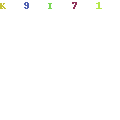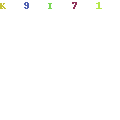Mumbai: The Maharashtra Pollution Control Board’s response to Mumbai’s alarming air quality is to shoot the messenger rather than find solutions by tackling source emissions. The state’s principal pollution control body has sought to relocate nine stations run by the System of Air Quality Research and Forecasting (SAFAR) which give the AQI readings from their current spot on the ground that they do not accurately reflect Mumbai’s ambient air quality.
In the last few weeks Mumbai has been consistently recording ‘poor’ to ‘very poor’ category AQI levels. The high level of pollution in the air is borne out on the ground by the number of people suffering from bronchial and throat issues.
Other than the 9 SAFAR monitors, MPCB itself operates at least 11 continuous ambient air quality monitoring stations (CAAQMS) in Mumbai, which typically record lower pollution levels than SAFAR’s devices. The allegation that SAFAR does not provide an accurate picture of air pollution in Mumbai was hotly contested by senior officials in the Indian Institute of Tropical Meteorology (IIT-M), an autonomous institute under the Union ministry of earth sciences, which oversees day-to-day SAFAR operations in Mumbai, Pune, Ahmedabad and Delhi.
The MPCB’s desire to relocate SAFAR’s Mumbai monitors to ‘cleaner’ areas, and its opaque attitude toward addressing an issue with massive public health implications, has also drawn sharp criticism from experts and officials including former environment minister Aaditya Thackeray.
“Air pollution in the city is visibly bad and we can feel its effects. People who can afford to leave town in search of cleaner air are indeed doing so. Sadly, nobody from the current government seems to be bothered. The Mumbai Climate Action Plan, which we launched last year and which draws out a practical roadmap to mitigate air pollution, seems to have been shelved without a thought,” Thackeray said to Hindustan Times on Tuesday.
A meeting was recently held between the MPCB and the BMC, in which the latter formally put forward their request to shift SAFAR’s monitors away from their current locations in BKC, Chembur, Worli, Colaba, Bhandup, Andheri, Borivali, Malad, Mazgaon, and Navi Mumbai. “We have met with concerned BMC officials on January 12 and suggested that the monitors be relocated. They are placed in areas where traffic emissions are typically higher than in other places. So, this doesn’t give the correct overall picture. It has not been decided where the devices will be shifted but we will give suggestions to the BMC and SAFAR for the same,” said VM Motghare, joint director (air), MPCB.
This rationale was explained in greater detail by an engineer with the BMC’s environment department who spoke on condition of anonymity. “We have been told that the SAFAR monitors are showing higher AQI numbers because they have been placed exactly where the intensity of emissions is high, and that they do not conform to the Central Pollution Control Board’s siting criteria. We will verify if that is actually the case.”
This revelation comes at a time when public interest in Mumbai’s air pollution scenario is at an all-time high, with many relying on SAFAR data to claim that Delhi air is, on many days, less polluted than Mumbai’s. For example, on January 16, SAFAR data showed Mumbai’s AQI to be 306, in the ‘very poor’ category, while Delhi’s was at 242, indicating ‘poor’ air quality. There are seven SAFAR monitors in Delhi, and eight in Mumbai, spread out across the cities.
“This is a reasonable comparison since SAFAR operates a similar number of monitors in both cities, but the CPCB’s daily air quality bulletin, published at 5pm every day, is a more robust measure because it uses data from all monitors in the city, including those of the pollution control board and SAFAR both,” said SN Tripathi, an atmospheric scientist at IIT-Kanpur. Going by these numbers (see accompanying box), Delhi air has indeed been more polluted than Mumbai, with PM2.5 and PM10 being the primary pollutants.
But that’s hardly a panacea for Mumbaikars. Ultimately, Tripathi and other experts agreed on one thing: it shouldn’t matter which city is more polluted.
“Playing the numbers game isn’t going to help anyone. There is something seriously worrying about Mumbai’s air pollution scenario, and authorities need to investigate urgently. If Mumbai and Delhi are both seeing AQI in the same range, that’s very worrying for Mumbai because it has a much higher rate of dilution than Delhi does,” said Sunil Dahiya, analyst with the Delhi-based Centre for Research on Energy and Clean Air (CREA).
“While further study is required to say what exactly is causing the issue in Mumbai, I would say that traffic and construction activities are to blame as far as local sources are concerned. Even though we have switched to cleaner Bharat-VI fuel in vehicles, the sheer number of vehicles on city streets is simply too much. Traffic congestion, for example, leads to huge spikes in pollution levels. Unless the city can cut back on use of fossil fuels, the crisis will continue to worsen,” Dahiya added.
When asked if it is necessary to shift SAFAR’s monitors to more favorable locations, Dahiya said, “Traffic intersections or localities with a high emissions load are important areas for monitoring. The CPCB prescribes placing monitors evenly across a range of micro-environments, including residential areas, industrial establishments, background areas, traffic junctions and others. There is no need to shift the monitors if they comply with the CPCB’s siting criteria.”
A senior official with the IIT-M, who has been closely involved in SAFAR’s operations, rubbished the MPCB’s claim that its monitors are less accurate than its own. They highlighted a peer-reviewed study led by Gufran Beig, SAFAR’s project director, that was published in the leading Elsevier journal ‘Environmental Modelling and Software’ in 2021.
The study noted, “The SAFAR model has reasonably good accuracy and stability in predicting PM10 and PM2.5 levels in contrasting micro-environments of Indian megacities… it predicts the extreme pollution event reasonably well but also over-estimates the concentrations of PM2.5 and under-estimate PM10.”
“The system has its limitations, yes, but it has been designed with a lot of rigour. It is India’s first indigenous AQI monitoring network. The MPCB’s own system would not hold up to international peer review. They are toying with public health at a very large scale,” the official said.
Gufran Beig, project director, SAFAR, declined to provide a comment for this story.
Source: https://news.google.com/__i/rss/rd/articles/CBMikQFodHRwczovL3d3dy5oaW5kdXN0YW50aW1lcy5jb20vY2l0aWVzL211bWJhaS1uZXdzL21wY2JzLXJlc3BvbnNlLXRvLWNpdHktcy1haXItY3Jpc2lzLXNoaWZ0LWFxaS1tb25pdG9ycy13aGVyZS1haXItcy1jbGVhbmVyLTEwMTY3Mzk4Mzk3MDE0NC5odG1s0gGVAWh0dHBzOi8vd3d3LmhpbmR1c3RhbnRpbWVzLmNvbS9jaXRpZXMvbXVtYmFpLW5ld3MvbXBjYnMtcmVzcG9uc2UtdG8tY2l0eS1zLWFpci1jcmlzaXMtc2hpZnQtYXFpLW1vbml0b3JzLXdoZXJlLWFpci1zLWNsZWFuZXItMTAxNjczOTgzOTcwMTQ0LWFtcC5odG1s?oc=5


